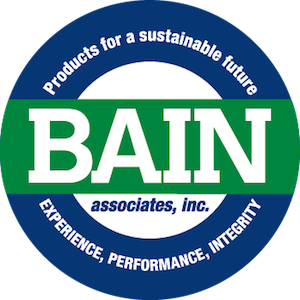As Portland’s urban development continues to expand, innovative solutions for managing stormwater are becoming increasingly important. After hundreds of waterproofing projects as the Hydrotech reps we’ve had countless experiences with the two popular methods for managing stormwater; bioswales and stormwater planters. However, purple roofs, an emerging technology that combines the benefits of green and blue roofs, offer a cost-effective alternative with additional advantages. In this blog post, we will explore the cost advantages of purple roofs compared to bioswales and stormwater planters, and why they should be considered for sustainable urban development projects.
Space Utilization:
One significant advantage of purple roofs over bioswales and stormwater planters is the efficient use of space. Purple roofs are installed on building rooftops, taking advantage of underutilized space, whereas bioswales and stormwater planters require dedicated ground space. By freeing up valuable ground space, developers can allocate this area for other revenue-generating purposes or amenities, leading to overall cost savings.
Lower Infrastructure Costs:
Implementing a purple roof system may result in lower infrastructure costs compared to bioswales and stormwater planters, particularly in the downtown core where green roofs are already mandated. Purple roofs manage stormwater on-site, reducing the need for extensive underground piping and the associated excavation and installation costs. This can lead to significant savings in both initial construction costs and long-term maintenance costs for urban developments.
Reduced Maintenance:
When properly designed and installed, Purple roofs generally require less maintenance than bioswales and stormwater planters. While all three systems require regular inspection and upkeep, bioswales and stormwater planters are more likely to experience clogging, sediment buildup, or plant overgrowth, which can increase maintenance costs over time. Purple roofs, on the other hand, offer a more controlled environment that can be designed to minimize these maintenance challenges.
Enhanced Energy Efficiency:
Purple roofs provide additional cost savings through improved energy efficiency. The combination of vegetation and engineered systems on a purple roof helps insulate the building, reducing heating and cooling costs. This can result in significant energy savings over the life of the building, which may not be achievable with bioswales or stormwater planters alone.
Multiple Benefits:
In addition to their cost advantages, purple roofs also provide several environmental benefits not found in bioswales or stormwater planters. These benefits include improved air quality, mitigation of the urban heat island effect, and the creation of habitats for urban wildlife. These added benefits can enhance the overall value of a development project and contribute to a higher return on investment.
While bioswales and stormwater planters have been popular choices for stormwater management in urban environments, purple roofs offer a cost-effective alternative that maximizes space utilization, lowers infrastructure costs, and reduces maintenance requirements. Additionally, purple roofs provide numerous environmental benefits that can enhance the overall value of a development project. As Portland and other urban areas continue to grow, incorporating purple roofs into new and existing buildings can play a crucial role in creating more sustainable, cost-effective, and resilient urban environments.

